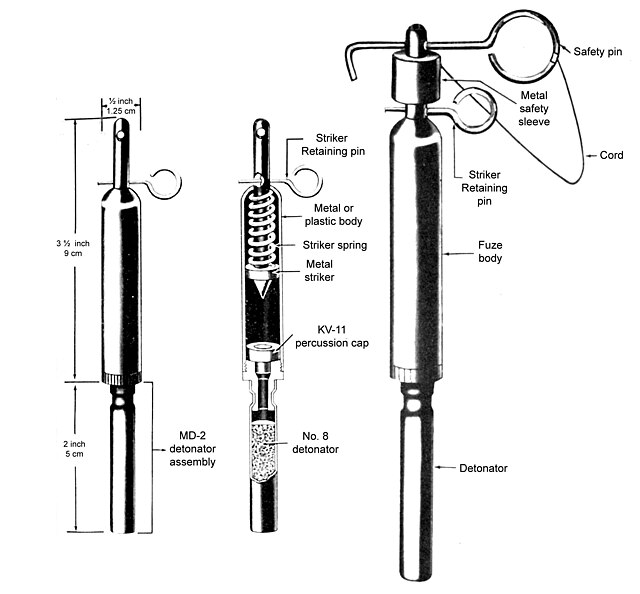F1_grenade_(Russia)
F-1 grenade (Russia)
Anti-personnel hand grenade
The Soviet F-1 hand grenade (Russian: Фугасный > Fugasnyy 1, "Explosive, Type No. 1") is an anti-personnel fragmentation defensive grenade. It is based on the French F1 grenade and contains a 60 g (2.1 oz) explosive charge (TNT). The total weight of the grenade with the fuze is about 600 g (21 oz).[2]
This article includes a list of general references, but it lacks sufficient corresponding inline citations. (September 2013) |


Due to its shape and its yellow-green color, it is nicknamed the limonka (fem. 'little lemon'). It is also nicknamed Efka (Russian: Эфка) for the letter F.[3] It is similar to the American Mk 2 "pineapple grenade", which was also ultimately modeled on the French F-1.
F-1 simulation-training grenade is called УРГ (учебная ручная граната),URG (training hand grenade).
